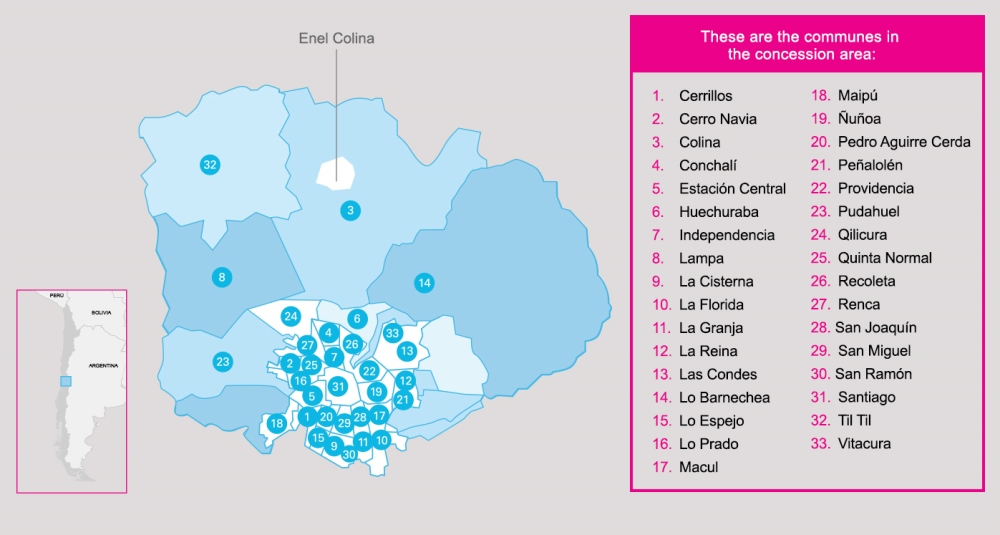Enel Distribución Chile, Strategy Applied to the RM
Enel Distribución Chile operates in 33 municipalities of the Metropolitan Region, supplying over 2 million customers and covering an area of 2,105.4 km2 representing 44% of all electricity distribution sales across the country.

The Sustainability Plan developed by Enel Distribución Chile is aligned with the company's global strategy, which is committed to contributing to the Sustainable Development Goals. In this sense, as of 2021, we have collaborated with over 211 communities and 33 municipalities towards a fair energy transition. Changes will not only come in how we generate, distribute, and use energy but also in changing roles of the Enel Group companies in creating shared value to develop initiatives that generate value for the company, the community, and interest groups.
Considering identifying priority issues for the community, including the mitigation of operational impact, long-term collaboration, and the reduction of greenhouse gas emissions, Enel Distribución Chile proposed a 2021-2023 Territorial Sustainability Plan aligned with the company's strategic priorities. The plan includes projects aimed at: (i) reducing the energy poverty gaps, improving quality, and promoting the safe and efficient use of energy; (ii) promoting access to high-quality education for our communities, providing knowledge, and raising awareness of climate change; and (iii) supporting the economic recovery and employability, understanding the new scenario imposed by the Pandemic.


